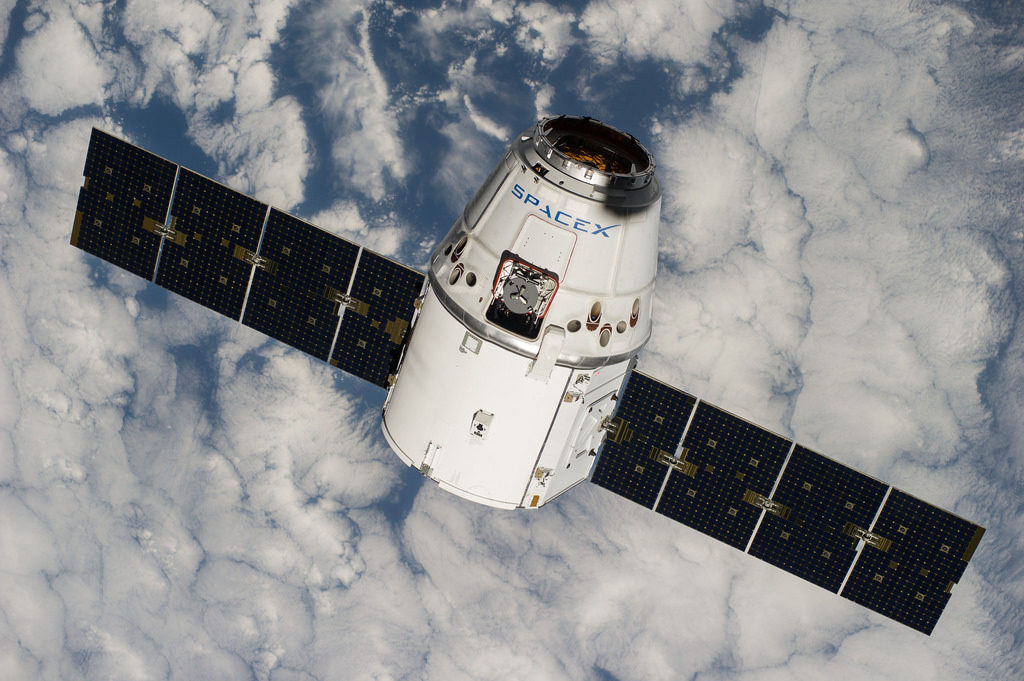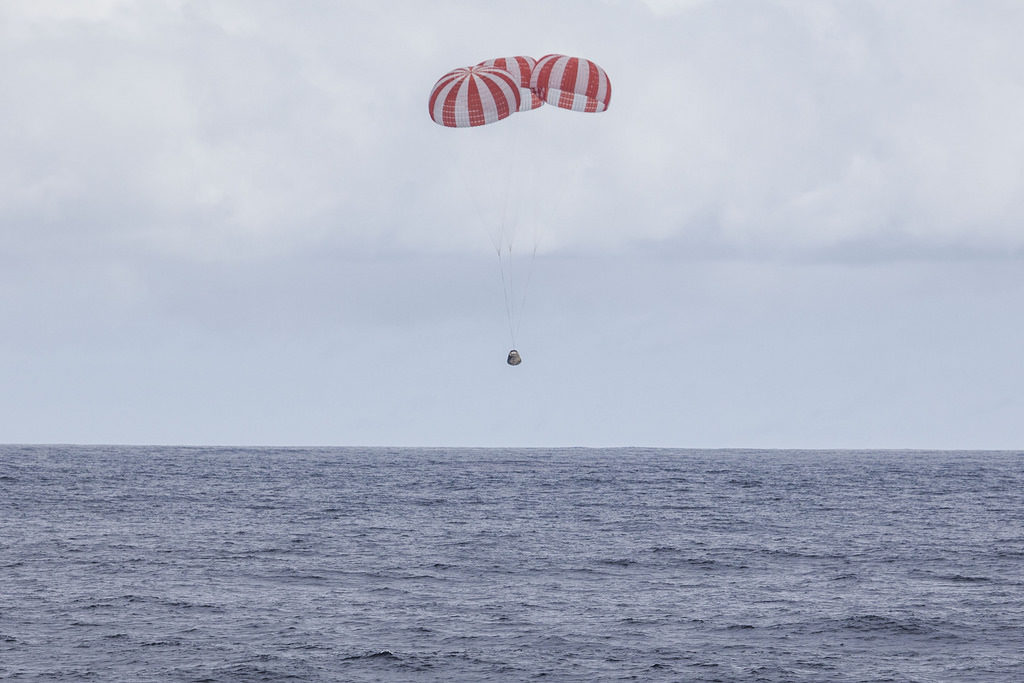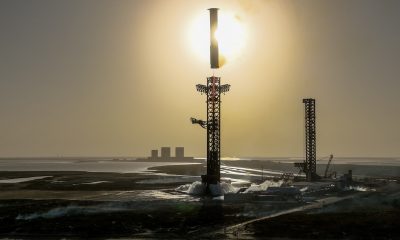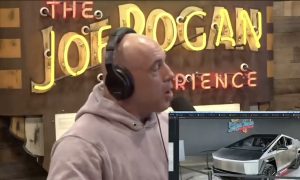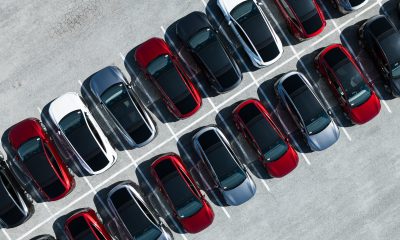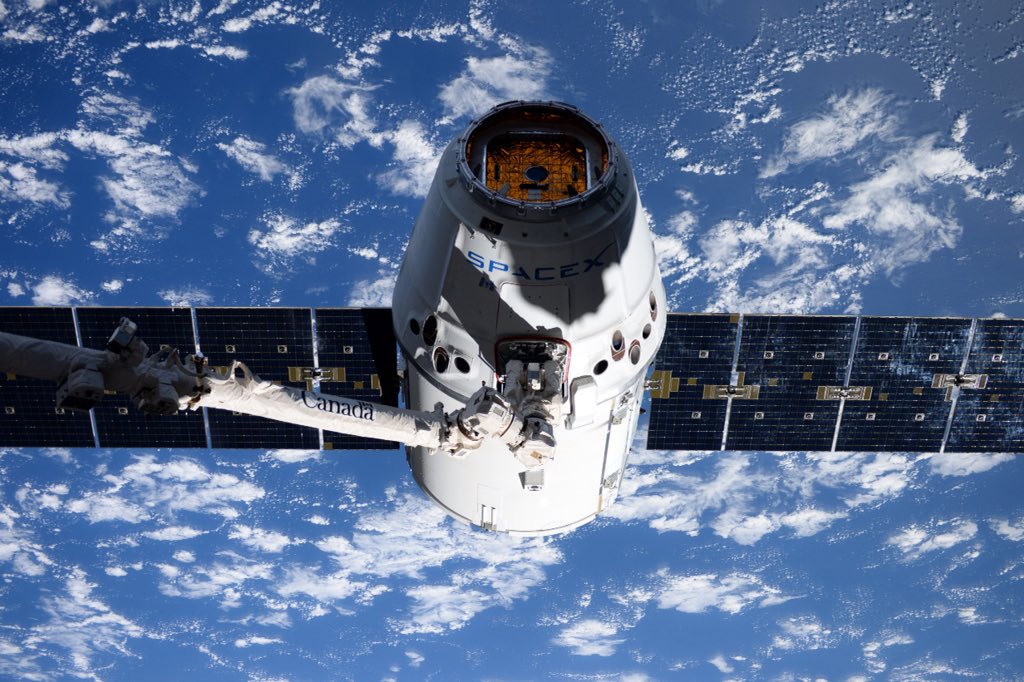

SpaceX
What SpaceX’s successful reuse of Dragon Spacecraft really means
Following Saturday’s auspicious launch and and first stage recovery, SpaceX’s Dragon spacecraft has successfully rendezvoused and docked with the International Space Station. Bringing with it more than 5,000 pounds of food, water, scientific experiments, and technology demonstrations, the company’s eleventh mission under their first Commercial Resupply Services contract is exceptional for a very unique and specific reason: the vehicle has flown before, bringing cargo to the ISS on SpaceX’s fourth CRS mission to the ISS. This accomplishment makes the Dragon currently docked at the ISS the only commercial spacecraft in human history to be launched into orbit more than once, continuing a tradition of auspicious firsts.
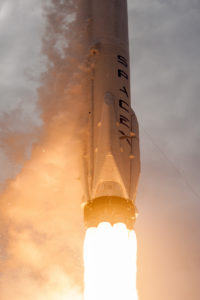
CRS-11 just after liftoff. Note the core designation “35” under the landing leg. (SpaceX)
Slightly more than two months after the first ever successful reuse of an orbital-class rocket, SpaceX now has two extraordinary demonstrations of success in favor of the company’s pursuit of democratizing affordable access to space. Reusability is and has been SpaceX’s method of pursuing that goal for at least a decade, with Musk publicly exhorting the potential benefits of rapid and complete reusability as early as 2007. It is almost a running joke within the community of aerospace and SpaceX fans that Musk will compare commercial airlines to orbital launch services at least once every time he is interviewed, but his point is and has long been clear. If all one has to do to run a transportation service is refuel after every trip, the price of a ticket or cargo transport drastically decreases. While many have slyly laughed or dismissed this goal in the past, often using the Space Shuttle as an example of the futility of reusability as a tool for cost reduction, it is quite hard to deny what SpaceX has accomplished so far.
The reuse of a Cargo Dragon is also arguably far more significant than it may initially appear. SpaceX has not provided any concrete information on the process of refurbishing the capsule, and it is entirely unclear if the “reuse” entailed much more than furnishing the CRS-4 pressure vessel and Draco thrusters with a new trunk, solar array, external shell. It is possible that, just like SES-10, the process of refurbishing a spacecraft for the first time resulted in little to no cost savings, and that this refurbishment took anywhere from several months to more than a year, with the CRS-4 capsule returning from orbit in late 2014. However, given the absolute rarity of reused capsule-type spacecraft, the data that engineers likely gathered throughout the process of refurbishing the Dragon would arguably make the whole process worthwhile even in the worst case scenarios described above. Hans Koenigsmann, Vice President of Mission Assurance at SpaceX, also noted in a press conference following CRS-11’s launch that the refurbishment of the capsule was somewhat uneventful, stating that the CRS-4 capsule had no unanticipated damage from the rigors of reentry and ocean landing and that SpaceX was already ready to consider using the capsule a third time. It’s likely that SpaceX will begin to rely more heavily on Cargo Dragon reuse as they refocus a majority of their manufacturing efforts on Dragon 2.
- The CRS-4 Dragon just before capture. (NASA)
- CRS-4 reentered in late 2014 and was recovered in the Pacific Ocean. (SpaceX)
SpaceX and Musk’s (in)famous ultimate ambitions are to make humanity a multiplanterary species, partly as a way to combat the extinction risks that an asteroid or comet strike pose, and partly because it is simply a staggering challenge that has the potential to make many humans “excited to wake up in the morning”. In order to make this happen, Musk saw that access to orbit was far too expensive for a colony on another planet to ever be sustainable, and that resuability was the only immediately obvious and accessible method through which the price to orbit could be decreased by several magnitudes. SpaceX is now almost routinely recovering Falcon 9 first stages when the mass of the payload allows it, and with a fifth and final version or “Block” of the vehicle optimized for rapid reuse set to debut later this year, Musk and others at the company have begun ruminating once more about the possibility of recovering and reusing the second stage of the Falcon 9. Benchmarked somewhere around 30% of the price of the vehicle, routine loss of the second stage effectively prevents the price of the Falcon 9 from dropping much below $20-30 million US dollars. While a nearly 50% or greater reduction in price would be an exceptional accomplishment, it is still far from from the multiple orders of magnitude reduction Musk hoped for when he set out to develop reusable rocketry.
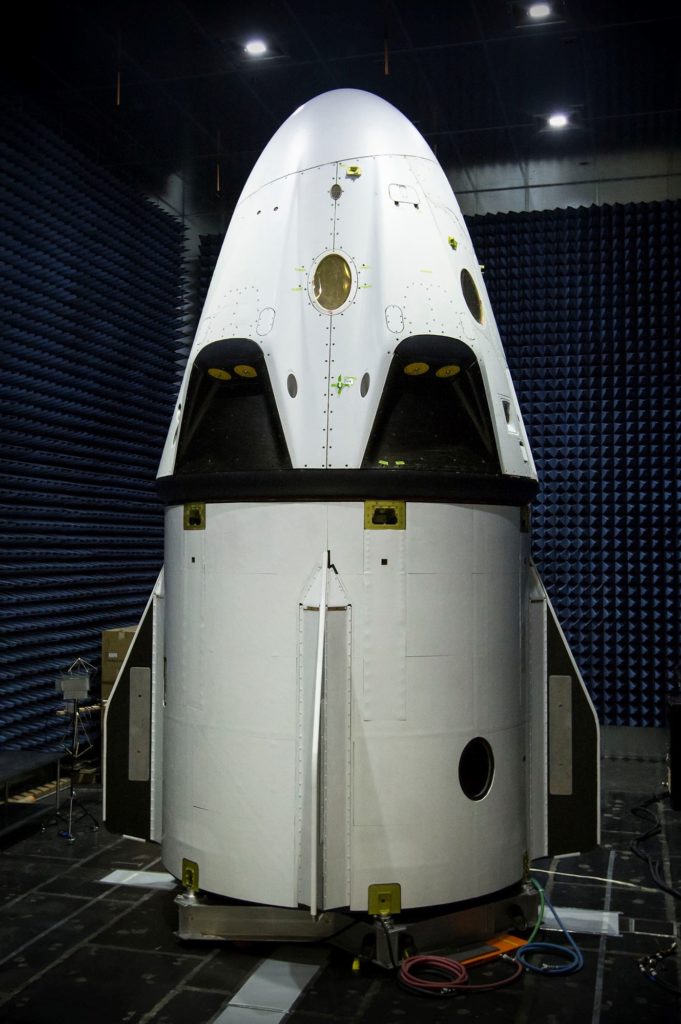
A prototype of Dragon 2 being tested in an anechoic chamber. (SpaceX)
This is where the reuse of Dragon pops its head up. With second stage recovery now being considered theoretically and Dragon 2 (Crew Dragon) preparing to begin regular launches in either Q4 2017 or Q1 2018, SpaceX has a good deal of experience to gain from learning how to safely and rapidly recover and reuse vehicles reentering the atmosphere at orbital velocity. Compared to recovering the first stage, this is another endeavor entirely. The fastest speed at which a recoverable first stage can ever realistically reenter the atmosphere is currently capped at around 5200 mph (2300 m/s), and is usually much closer to 3000 mph. An orbital capsule like Dragon, however, enters the atmosphere from Low Earth Orbit (LEO) at around five times that speed, typically close to 16,000 mph. In the context of recovering the second stage of Falcon 9, one must consider that most of SpaceX’s commercial manifest is made up of geostationary satellites, which require more energy to reach a higher orbit, and consequently would require the second stage to survive even higher reentry velocities in order to be recovered.
Returning from Mars, as SpaceX’s Interplanetary Transport System would have to, results in even higher reentry velocities of at least 25,000 mph for a reasonably quick journey. This is the most important detail in explaining the true value of simply reusing a Dragon capsule as SpaceX has just now done. By taking its first steps towards routinely reusing truly orbital spacecraft, SpaceX is advancing their knowledge reusability in practice and consequently taking concrete steps to prepare themselves for the difficult challenges that lie ahead in their pursuance of enabling sustainable colonization of Mars. Dragon 2 (Crew Dragon) promises to eventually rid the refurbishment process of the many headaches that salt water intrusion undoubtedly creates by returning via supersonic retropropulsion to a landing pad, much like Core 35 did this past Saturday.
Looking slightly further into the future, SpaceX has already announced plans to launch two unnamed private customers in a Dragon 2 on what would likely be a circumlunar free return trajectory, or around the Moon and back. The reentry velocity would be very similar to the velocity required to return to Earth from Mars, and certainly much faster than any reentry from geostationary orbits of Earth. If SpaceX manages to successfully and reliably recover and reuse orbital vehicles reentering at such high velocities, then the company will have made extraordinarily promising progress towards achieving their central goal of drastically lowering cost to orbit and thus enabling humanity to gain footholds on other planets.
So, take this Dragon reuse as you will. It may well be a major step along the way to colonizing Mars, or it may simply be an exciting practical implementation of SpaceX’s philosophy of reuse. Either way, this is a Dragon that is certainly worth celebrating.
SpaceX
SpaceX pitches subscription model for Trump’s Golden Dome
SpaceX pitched a subscription model for Trump’s Golden Dome. Faster deployment, but at the cost of gov control & steady bills.
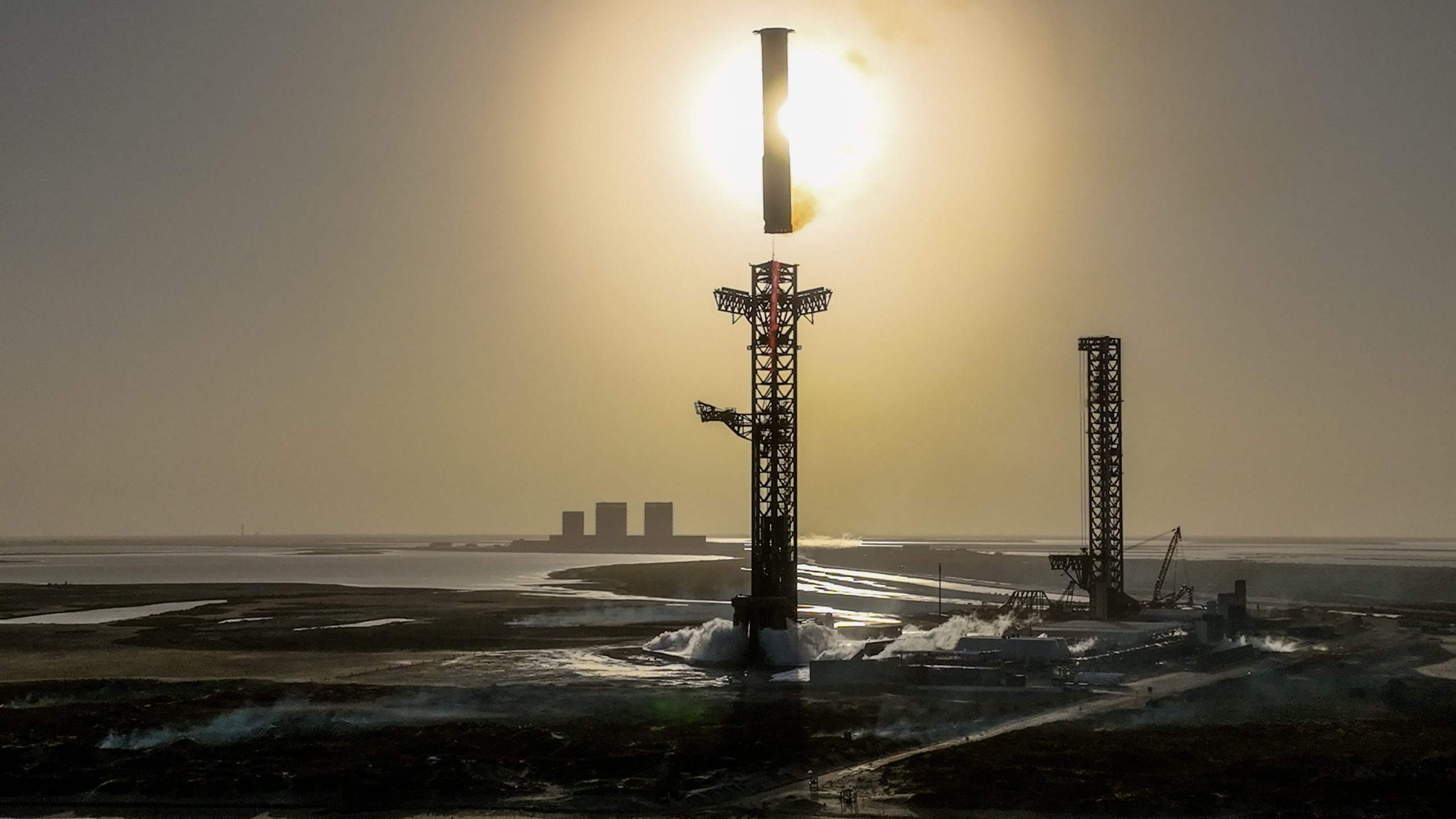
SpaceX pitched a subscription model for U.S. President Donald Trump’s Golden Dome for America.
SpaceX is a frontrunner to build key components of President Trump’s Golden Dome–formerly known as the Iron Dome. In January, President Trump signed an Executive Order to build an Iron Dome missile defense shield to protect America.
The ambitious project has drawn intense interest from defense startups, including Epirus, Ursa Major, and Armada. Companies with long-standing contracts with the U.S. government are also vying to build Trump’s Golden Dome, like Boeing and Lockheed Martin.
According to six Reuters sources, SpaceX is partnering with Palantir and Anduril on a Golden Dome proposal for the U.S. government.
The trio is pitching a plan to deploy 400 to 1,000+ satellites for missile detection and tracking, with a separate fleet of 200 attack satellites armed with missiles or lasers to neutralize threats. SpaceX will mainly focus on the sensing satellites, not weaponization.
SpaceX reportedly proposed a subscription service model for Trump’s Golden Dome, where the government pays for access rather than owning the system outright. This approach could bypass some Pentagon procurement protocols, enabling faster deployment. However, it risks locking the government into ongoing costs and reduced control over development and pricing.
A few Pentagon officials are concerned about SpaceX’s subscription model for the Golden Dome because it is a rare approach for major defense programs. U.S. Space Force General Michael Guetlein is exploring whether SpaceX should own and operate its segment or if the U.S. should retain ownership with contractors managing operations.
The Golden Dome’s innovative scope and SpaceX’s subscription model signal a new era for defense contracting. However, Trump’s Golden Dome program is in its early stages, giving the Pentagon time to consider SpaceX’s subscription model proposal. As the Pentagon weighs options, SpaceX’s technical prowess and unconventional approach position it as a key player in Trump’s vision for a robust missile shield.
News
Bell Canada takes aim at potential Starlink subsidies
Details of Bell Canada’s anti-Starlink efforts were shared by the Financial Times (FT).
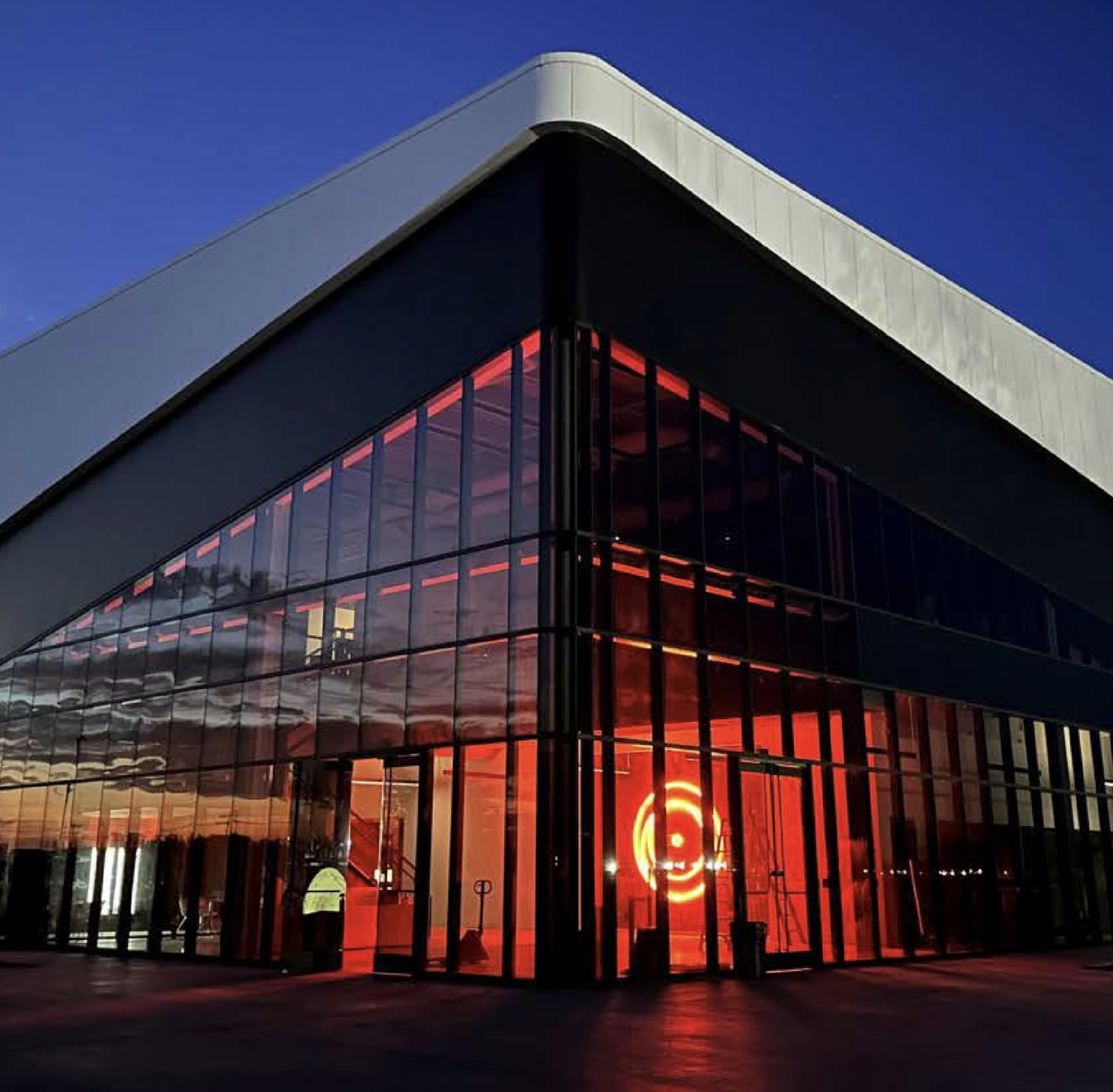
Tensions are rising in Canada’s telecommunications landscape as the nation’s leading telecom provider, Bell Canada, seeks to block Elon Musk’s Starlink from accessing potential subsidies.
Details of Bell Canada’s anti-Starlink efforts were shared by the Financial Times (FT).
Bell’s Push to Block Starlink Subsidies
As noted by the FT, Bell Canada and its subsidiary Northwestel are lobbying against potential subsidies that Starlink could receive for providing internet access to the country’s remote northern regions, including the Arctic. In correspondence obtained by the Times, Bell argued that Starlink’s flat pricing proves that it does not require support to operate in Canada’s remote areas.
A decision about the matter will be announced by the Canadian Radio-television and Telecommunications Commission (CRTC). That being said, the CRTC stated in January that a subsidy would help make “internet services more reliable and affordable for residents of the Far North.”
Starlink’s Defense
SpaceX, Starlink’s parent company, has fired back at Bell, stating that blocking subsidies would harm competition and leave isolated communities such as First Nations groups with fewer, more expensive, and less reliable internet options.
While Canada’s two biggest telecommunications groups, Bell and Rogers, still dominate the country’s internet and phone service market, Starlink has been making progress in its efforts to saturate the country’s remote regions. Starlink received official approval to operate in October 2022, and since then, it has grown its customer base to 400,000 active customers as of last year.
Musk’s Empire Under Fire in Canada
The subsidy clash is part of a broader Canadian backlash against Musk’s ventures, which seems to be fueled by his role in the Trump administration. Apart from Bell’s anti-Starlink efforts, Ontario also axed a $100 million Starlink contract. Quebec has noted that it would not be renewing its Starlink subsidy scheme as well.
Tesla, on the other hand, lost government EV subsidies, with Transport Minister Chrystia Freeland leading the charge. As per Geoff White of the Public Interest Advocacy Center, “We should not be giving one cent of public money to an unaccountable imperialist like Elon Musk.”
News
Tesla China’s first Megapack exports are headed for a big battery in Australia
The Tesla Megapack batteries are bound for Queensland’s Western Downs battery project.
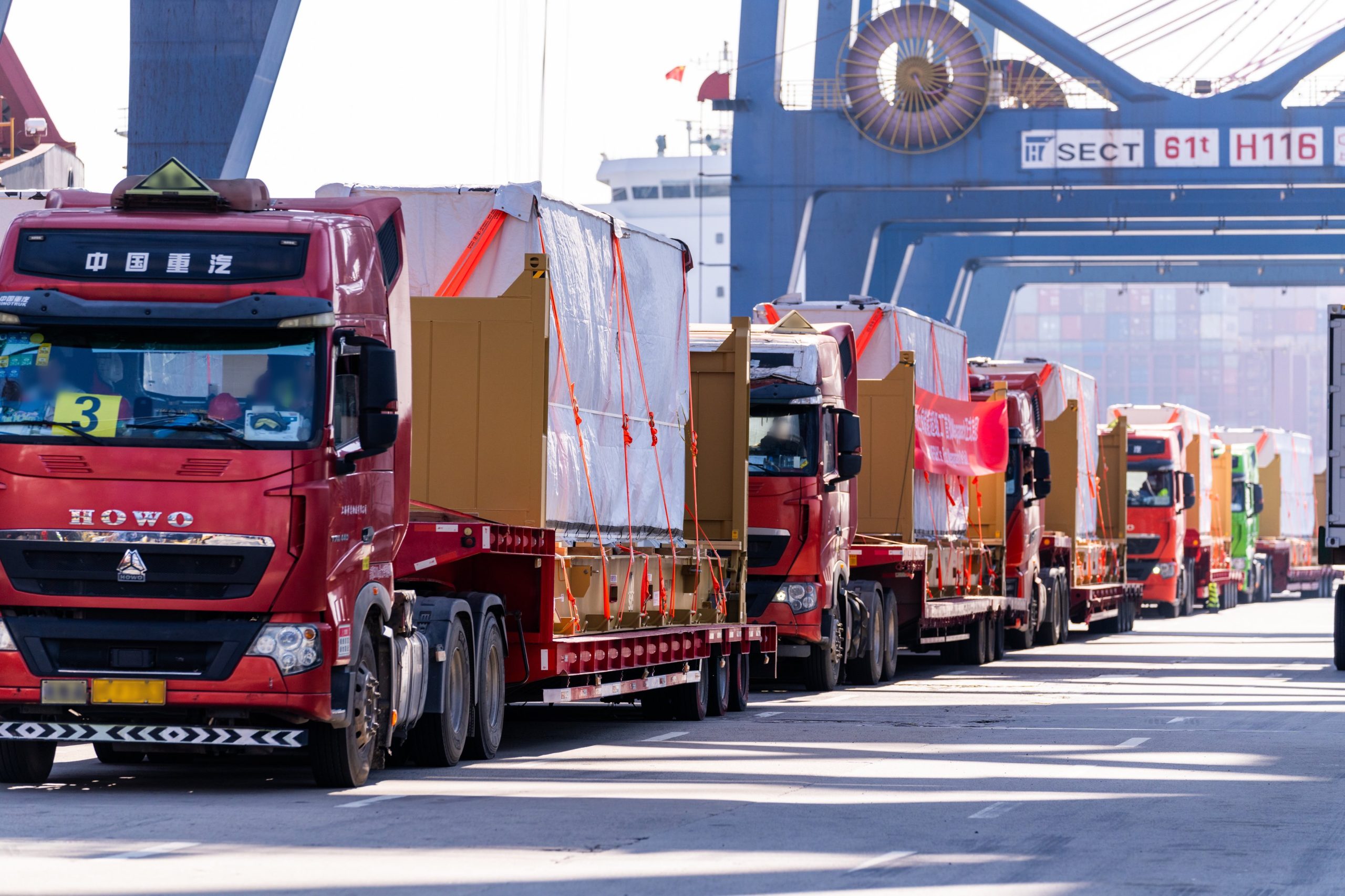
A few days ago, Tesla announced that the first Megapack battery units from its Shanghai “Megafactory” were being shipped to Australia.
As per recent reports, the massive grid-scale Tesla batteries are bound for Queensland’s Western Downs battery project.
The Shanghai Megafactory
The Shanghai Megafactory is Tesla’s first battery storage factory outside the United States. Built close to Gigafactory Shanghai, the Shanghai Megafactory is expected to supply Megapack batteries to both China and foreign markets.
The Megapack represents a huge portion of Tesla Energy’s deployments. With 3.9 MWh of energy, Tesla notes that each Megapack is enough to power 3,600 homes for an hour. The Shanghai Megafactory has a capacity to produce 10,000 Megapacks per year to start.
Mike Snyder, vice president of Tesla, shared his optimism about the Shanghai Megafactory. “Megafactory gives us the ability to scale production and efficiency. We can lower logistics costs as well as product costs, and grow the business to new markets,” he stated.
Australia Battery Projects
As noted in a report from Renew Economy, the first Megapack shipments from the Shanghai Megafactory will be installed in the second stage of the Western Downs battery project, which is being built by Neoen. The Western Downs battery project involves a 460 MWp solar farm coupled with a 540 MW/1,080 MWh big battery system.
Tesla has also been listed as the battery supplier for the upcoming Calala battery in Tamworth, New South Wales, which will involve 138 Megapack units. The Megapacks for the Calala battery will likely be imported from the Shanghai Megafactory as well.
Data from Rosetta Analytics suggests that Tesla is currently the dominant player in Australia’s energy storage segment, with the company holding over 30% of the market. Tesla has become a notable presence in Australia’s energy sector for years, especially following the company’s buildout of the Hornsdale “big battery,” which was initially comprised of Tesla Powerpacks, in 2017.
-
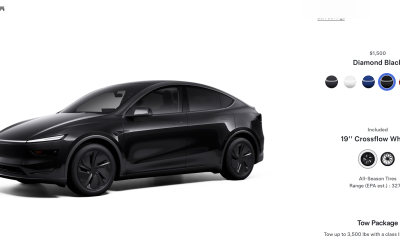
 News2 weeks ago
News2 weeks agoTesla rolls out new, more affordable trim of the Model Y Juniper in U.S.
-
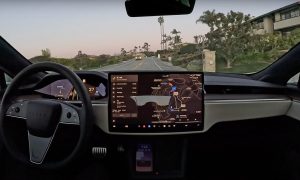
 News2 weeks ago
News2 weeks agoTesla expands Early Access Program (EAP) for early Full Self-Driving testing
-
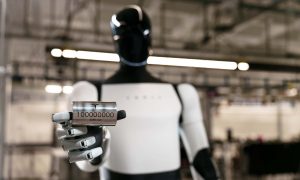
 News2 weeks ago
News2 weeks agoTesla celebrates key milestone for 4680 battery cell production cost
-
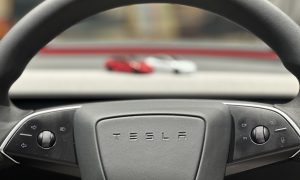
 Investor's Corner2 weeks ago
Investor's Corner2 weeks ago“Nothing Magnificent about Tesla (TSLA),” claims Jim Cramer
-
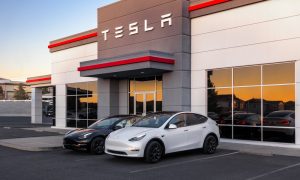
 Elon Musk2 weeks ago
Elon Musk2 weeks agoThis Tesla vandal caused thousands in damage, but she was let off the hook: Here’s why
-

 News1 week ago
News1 week agoI took a Tesla new Model Y Demo Drive – Here’s what I learned
-
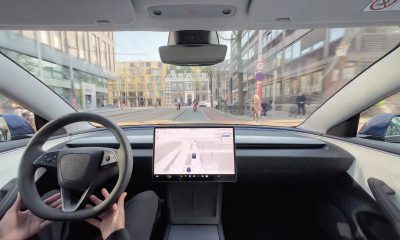
 News2 weeks ago
News2 weeks agoTesla Europe shares FSD test video weeks ahead of launch target
-
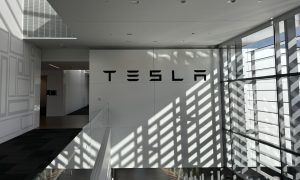
 News2 weeks ago
News2 weeks agoThis Tesla executive is leaving the company after over 12 years

